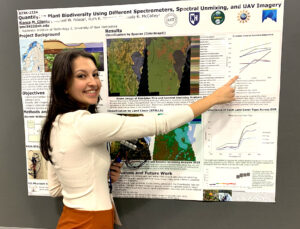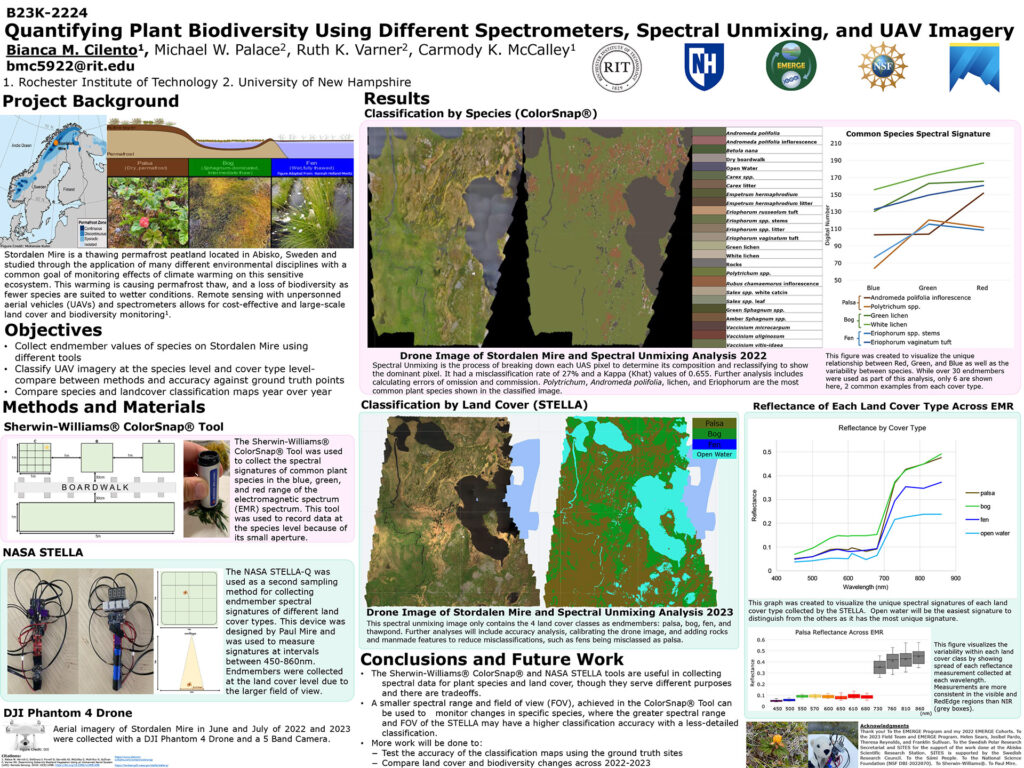December 2023 —

Abstract: Monitoring biodiversity is an effective way to quantify and assess the impacts of climate change, but methods for doing so can be inaccessible, laborious, or invasive to an ecosystem. In Arctic environments, permafrost peatlands are thawing at accelerated rates and causing wetter conditions that are suited to fewer plant species, resulting in a loss of biodiversity. We used aerial imagery from unpiloted aerial systems (UAS) (collected July 2022&2023) combined with field collection and in-situ spectral characteristics of plant species to characterize vegetation landcover and predict sub-habitat changes. Our field site was at Stordalen Mire, Sweden. Field collection involved creating a spectral library using portable spectrometers such as the 350-2500nm Spectra Vista Corp. HR-1024i, which can be expensive and cumbersome.
This research aims to address the tradeoffs of cost and precision in an effort to make large-scale biodiversity monitoring more accessible by testing alternative spectrometers such as the NASA STELLA Q and Sherwin-Williams® ColorSnap Tool®. In addition to testing different sampling tools, this research will look at different classification methods including classifying by cover type or species through spectral unmixing, such as Random Forests.
Spectral unmixing breaks down a UAS image into the probability of end members at the pixel scale, finds which signature is prominent in each, and displays the species associated with it. Spectral unmixing is helpful in tracking sub-habitat changes over time, predicting areas of high concern in the future, and measuring biodiversity throughout a study area to indicate ecosystem health.


